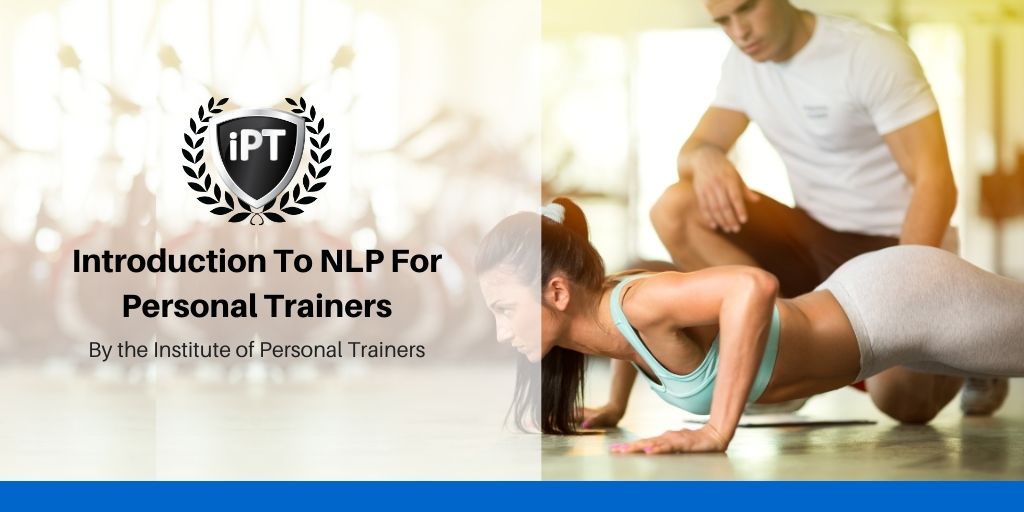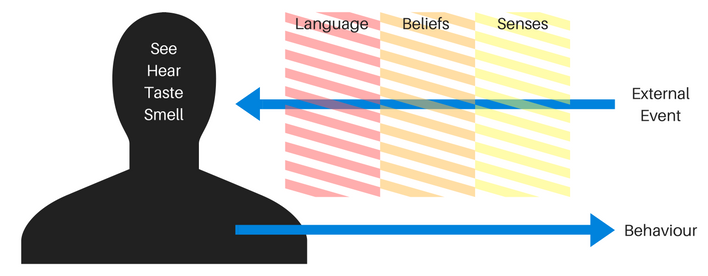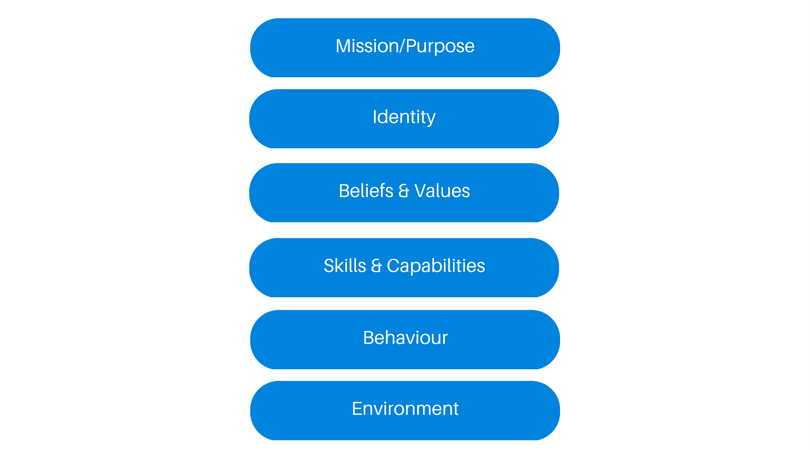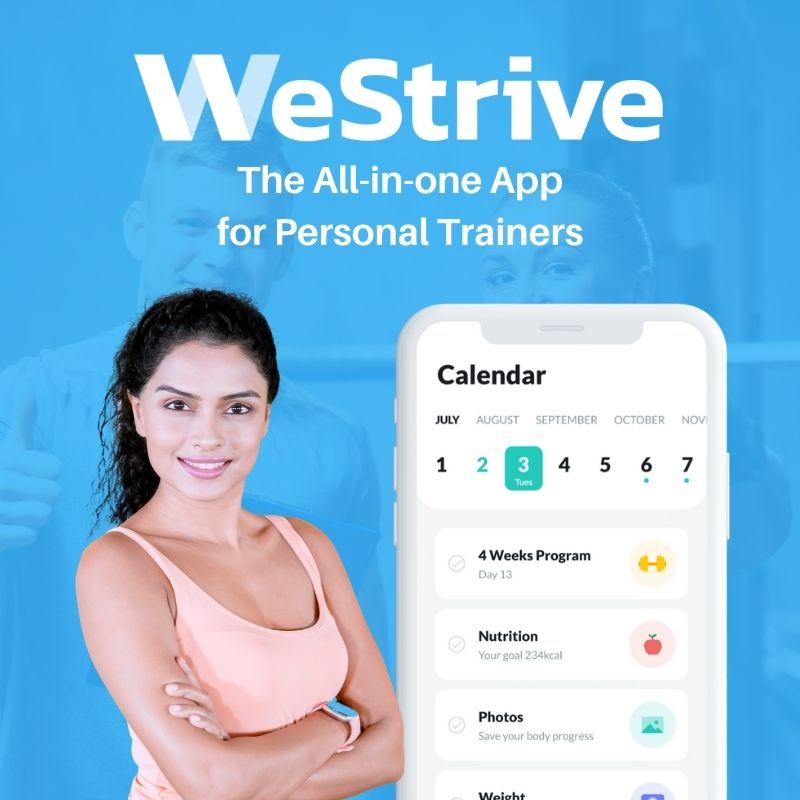|
FREE GUIDE: HOW TO LAUNCH AN ONLINE PERSONAL TRAINING BUSINESS
IN JUST 7 DAYS
✓ The new, better way of launching an online business
✓ The fastest way to create in irresistible offer ✓ A simple system to sell to clients who are interested |
|
NLP stands for Neuro-Linguistic Programming. “Neuro” relates to the neurology of the individual client, those physical aspects of the brain’s wiring and how that relates to their mental and emotional connection with any experience. “Linguistic” relates to the language someone uses to communicate with others, and more importantly - the way the client talks to themselves, internally. “Programming” is about how this can be used as a functional tool. In a personal training context, this would involve working with the client to recognise their mind as the internal operating system that drives their behavioural choices. That their current behaviours are the result of all their past experiences, thoughts and feelings and that with changes to their language they are able to take control of their behaviour more successfully. What Is NLP? NLP was a psychological technique developed in the 1970s by Richard Bandler and John Grinder who were Professors at The University of California Santa Cruz. By looking at some of the methods employed by therapists and some of the world’s best communicators they tested and refined these “magic results” on their friends and colleagues. NLP aims to “speak the language of the mind” and claims to be able to marry the conscious goal-setting portion of the brain with the unconscious part which sees opportunities or obstacles to that goal to create behavioural changes quickly. For personal trainers, NLP could be a way of communicating with clients that empowers them to make positive changes in their lives, to recognise the opportunities presented when prioritising their health and to see the choices they make with food and movement to be within their control. Does NLP Even Work for Personal Trainers? Many studies on NLP say, yes, it does work. But others are less convinces. For example, a study published in the journal Counselling and Psychotherapy Research found that: "Neuro‐linguistic psychotherapy is an efficient intervention, which is on a par with other, well‐established psychotherapeutic techniques." However, a review published in The British Journal of General Practice of 10 available studies on NLP was less favorable, stating: "There is little evidence that NLP interventions improve health-related outcomes." But also following up with: "This conclusion reflects the limited quantity and quality of NLP research, rather than robust evidence of no effect." In other words, they couldn't find strong evidence in the research the reviewed but they didn't review enough research to come to any kind of substantial conclusion. Despite being around for over 40 years, NLP hasn't demonstrated any massively positive or negative research either way and this likely means the effects of NLP on personal training clients varies from client to client. With that said, a lot of the theories in NLP are the same foundational theories in a lot of habit coaching and are well worth knowing for almost all personal trainers. How Does NLP Work? NLP starts from a belief that provided someone can understand how someone else has accomplished a given task, they are able to model the process themselves and teach it to someone else. Based on this, there are three fundamental pillars of NLP. These are modelling the behaviour of others, taking action to achieve an outcome and effective communication with self and others. Practitioners of NLP start by assuming that every human has a personal lens through which they see their subjective reality. By analysing their own perspective, the individual would be able to create an overview of a situation and by understanding other people’s perspectives, they can gather data about the experience. In practice for personal trainers, this might be examining all five of a client’s physical senses around training, adherence to a plan or diet to see how the body and mind influence each other. NLP is based in subjectively real experiences, so if someone wants to truly understand something, they’ve first got to experience it for themselves. For example, if someone believed that gyms were judgemental places where they didn’t belong, that view would have to be challenged through the first-hand experience of actually going to a gym. What Are The Stages Of Change With NLP? In NLP, there are six stages of learning, communicating and creating meaningful and lasting change which are all based on logical personal experience. Let's explore each stage starting with the least impactful. Environment This is the most basic level and relates to your physical environment, the situational context in which behaviour happens and includes the people around you. From the perspective of a personal trainer, this could relate to clients keeping healthy foods more visible in the kitchen than less healthy foods or to normalise going to the gym by making some gym friends. Behaviours These are the specific actions a client performs. This could include actually buying workout clothes, and joining a gym. Capabilities and skills This relates to what someone can actually do. These are not fixed, and for a client, that’s new to exercise these will develop quickly with practice. There may be a learning curve, to begin with, especially with more complex behaviours, but this can be overcome by breaking the skill into more simple component parts that develops confidence. Beliefs and values These are highly unique to the individual, and relate to a personal belief system and the things which matter to them. In a personal training context, this could relate to valuing aesthetics over health, or mobility over cardiovascular fitness. Identity This relates to someone’s perception of themselves, including the responsibilities of their life, and the role they fulfil within their family, working environment and wider community as a whole. This is “the sort of person they are” and often is something someone isn’t consciously aware of. This could be identified through things they say about their younger self, such as “I was never any good at PE at school”. Purpose and spirituality This usually relates to something much bigger than the individual - going to the very heart of their belief systems, such as their morality or religion. To create change here is the very highest level of change. Changing lower levels (e.g. environment) is easier and usually much quicker than changing higher levels, but all levels influence one another, both above and below. NLP Courses As is so often the case in the fitness industry, the lack of regulation around the training and certification in NLP has meant people have become “practitioners” without credible experience. Despite this, it’s likely that we’ve used principles of NLP already without really knowing it, such as challenging our clients on their internal dialogue and beliefs. MindBody offers a Diploma in NLP Fitness & Sports Coaching. And NLPUK offers both in person and online courses which are certified. But others, such as this Udemy course, focuses on NLP for therapists and while the principles would be the same, it would be left up to the personal trainers to make a health and fitness-specific interpretation of the content. Finally, a word of caution. NLP is also the acronym for Natural Language Processing which relates to computer programming and is unrelated to creating behavioural change for a personal training client through adapting and challenging their language. Conclusion The empirical evidence for NLP is limited, with sample sizes being small and the research ranging from the application of NLP in education, therapy and a number of other areas.
There is some evidence for it in the context of health and fitness, and the terminology around NLP (such as Congruence vs. Incongruence) is likely to be familiar to most personal trainers that are invested in supporting their clients with internal change. While it’s not absolutely necessary to become formally certified as an NLP practitioner, it can be an unique feature that could help one personal trainer to stand out from others. Fundamentally, personal trainers are aiming to support their clients with behavioural changes that last and to do this without challenging their internal beliefs is unlikely to be successful anyway. |
Our All In One Platform
Check out out all in one business & marketing platform for personal trainers!
WEBSITE BUILDER | FUNNELS |MEMBERSHIPS | SCHEDULING| EMAIL MARKETING| PAYMENTS| CRM | AI ASSISTANT | SURVEYS
Popular Articles
Trusted Partners
We work closely with some of the best service providers in the fitness industry.
Categories
All
|









